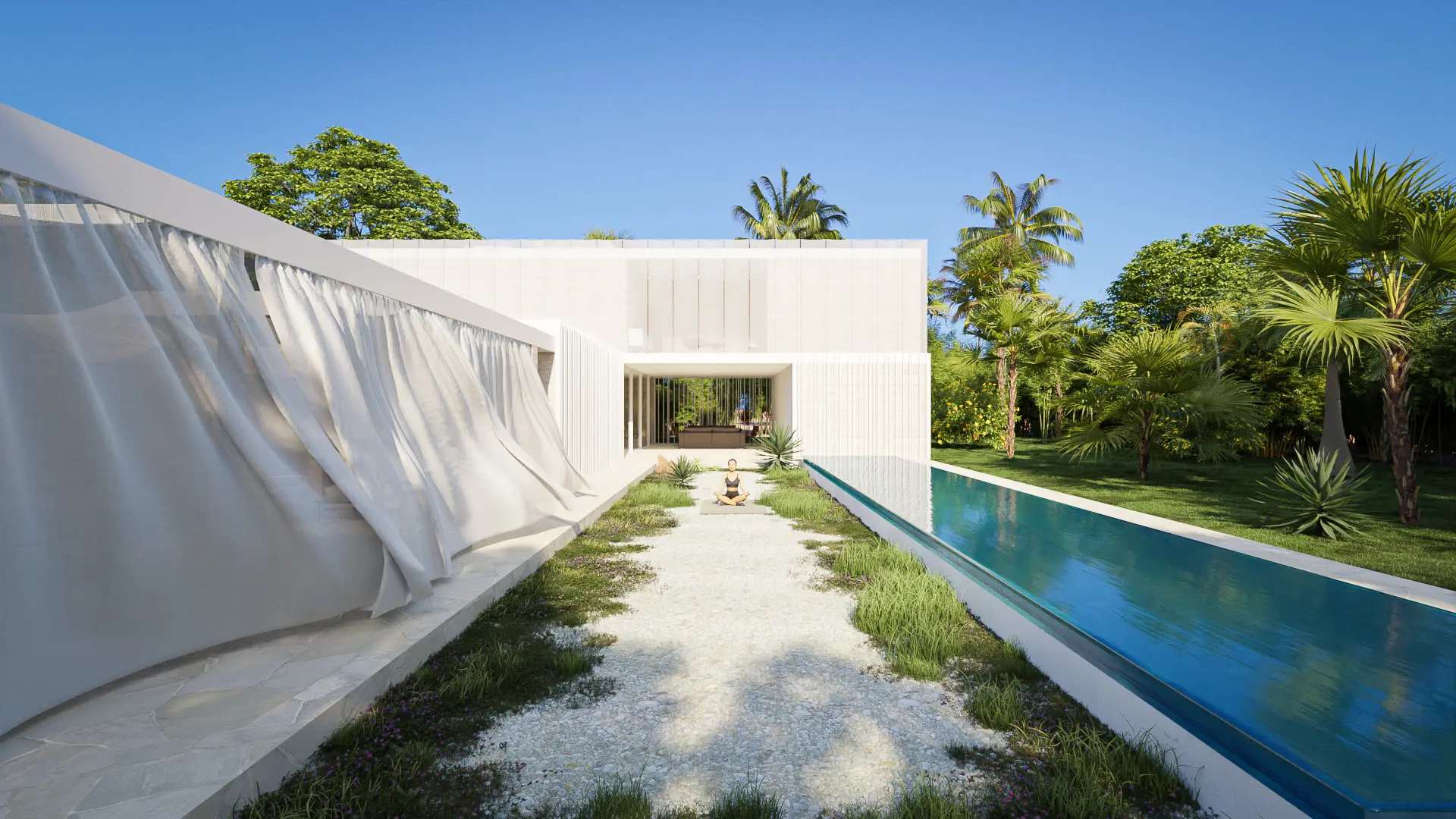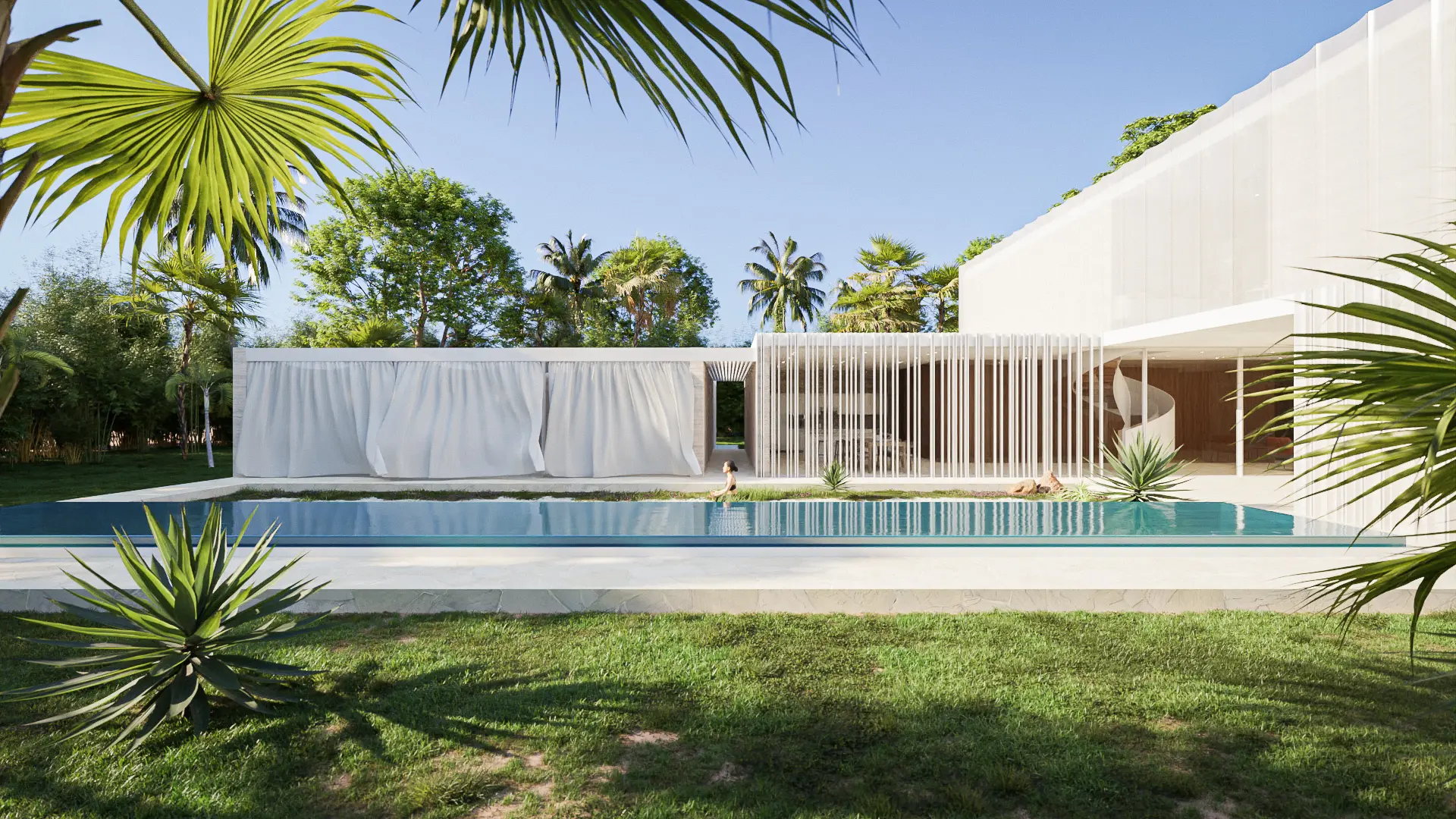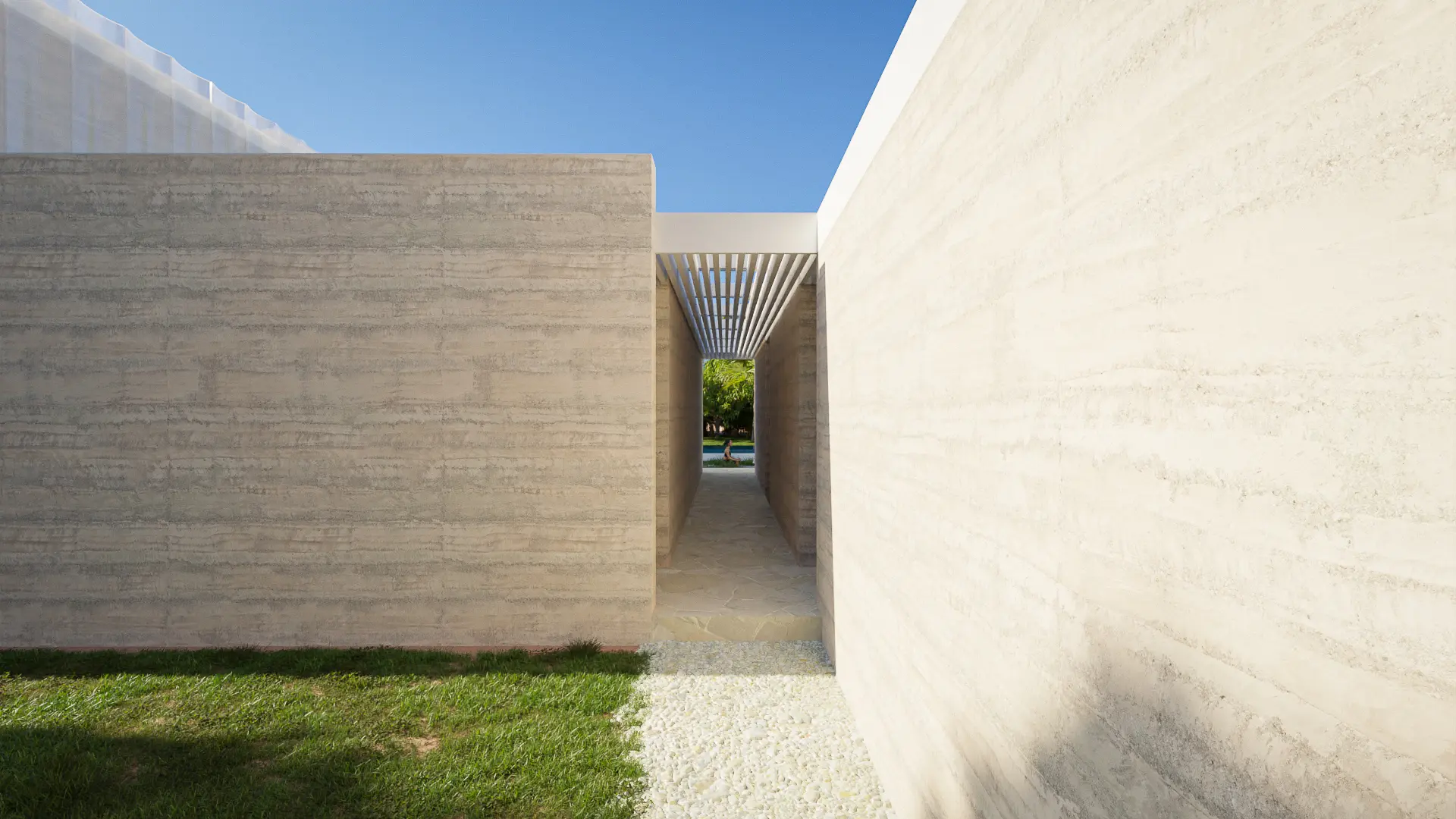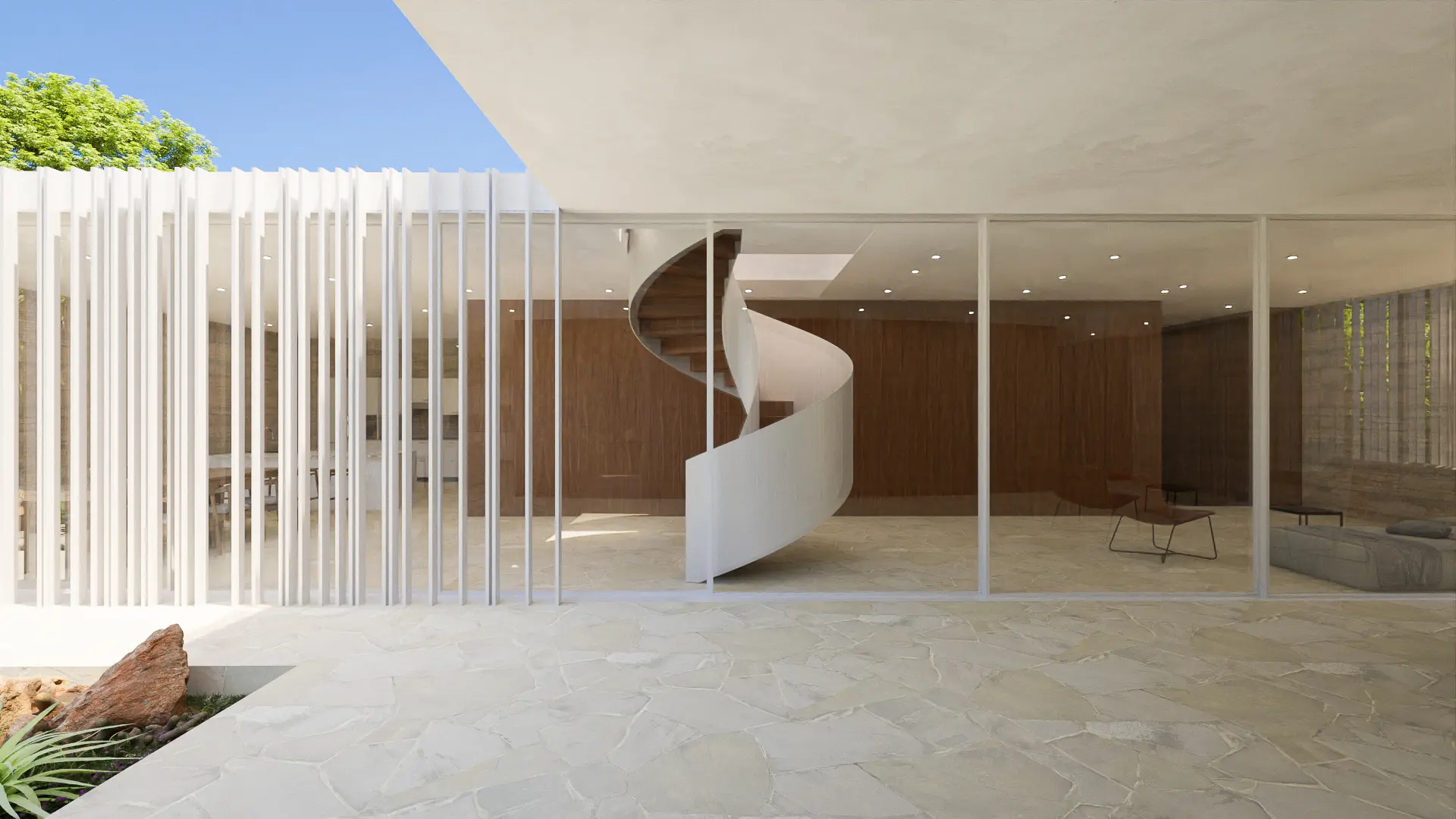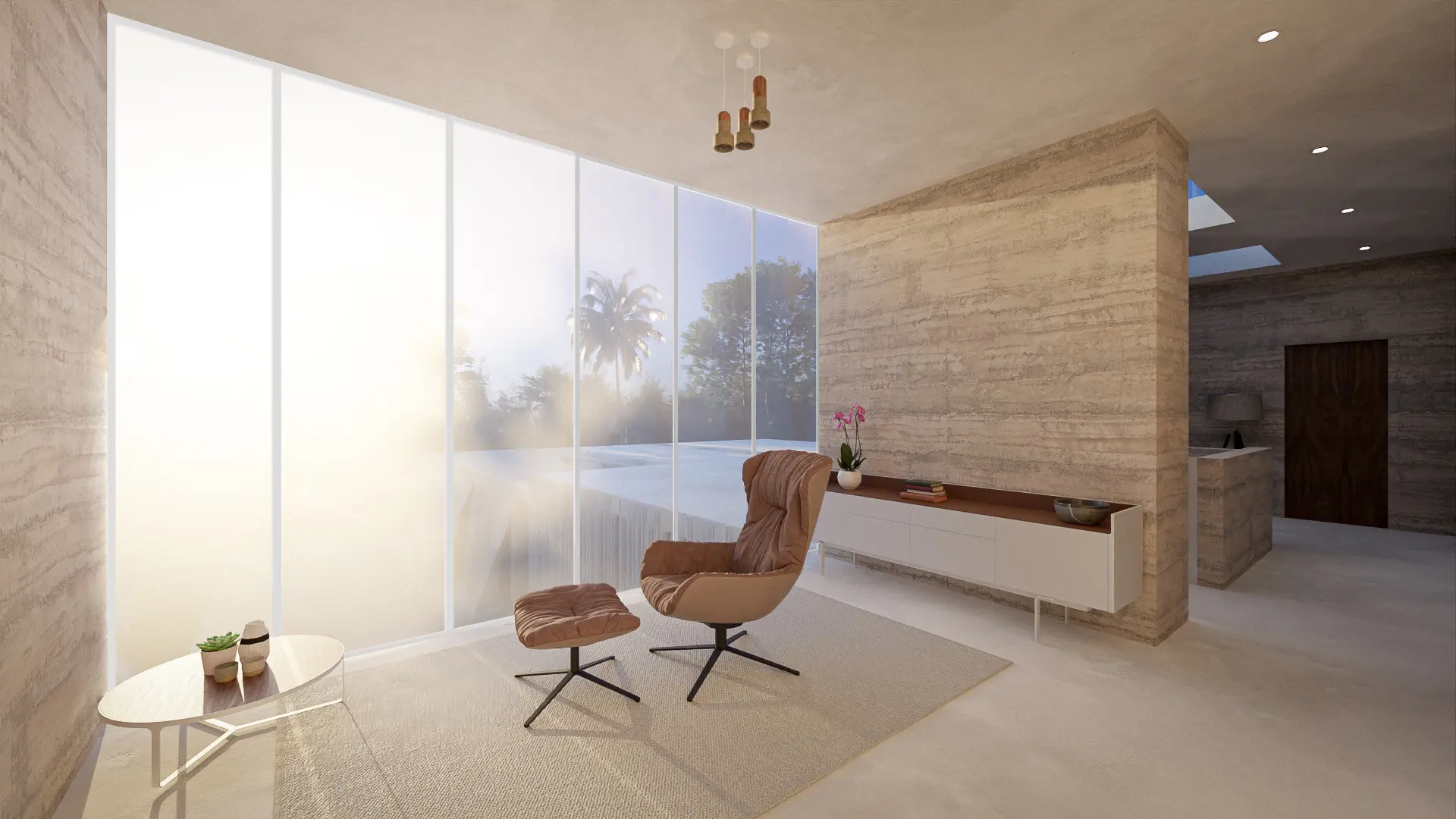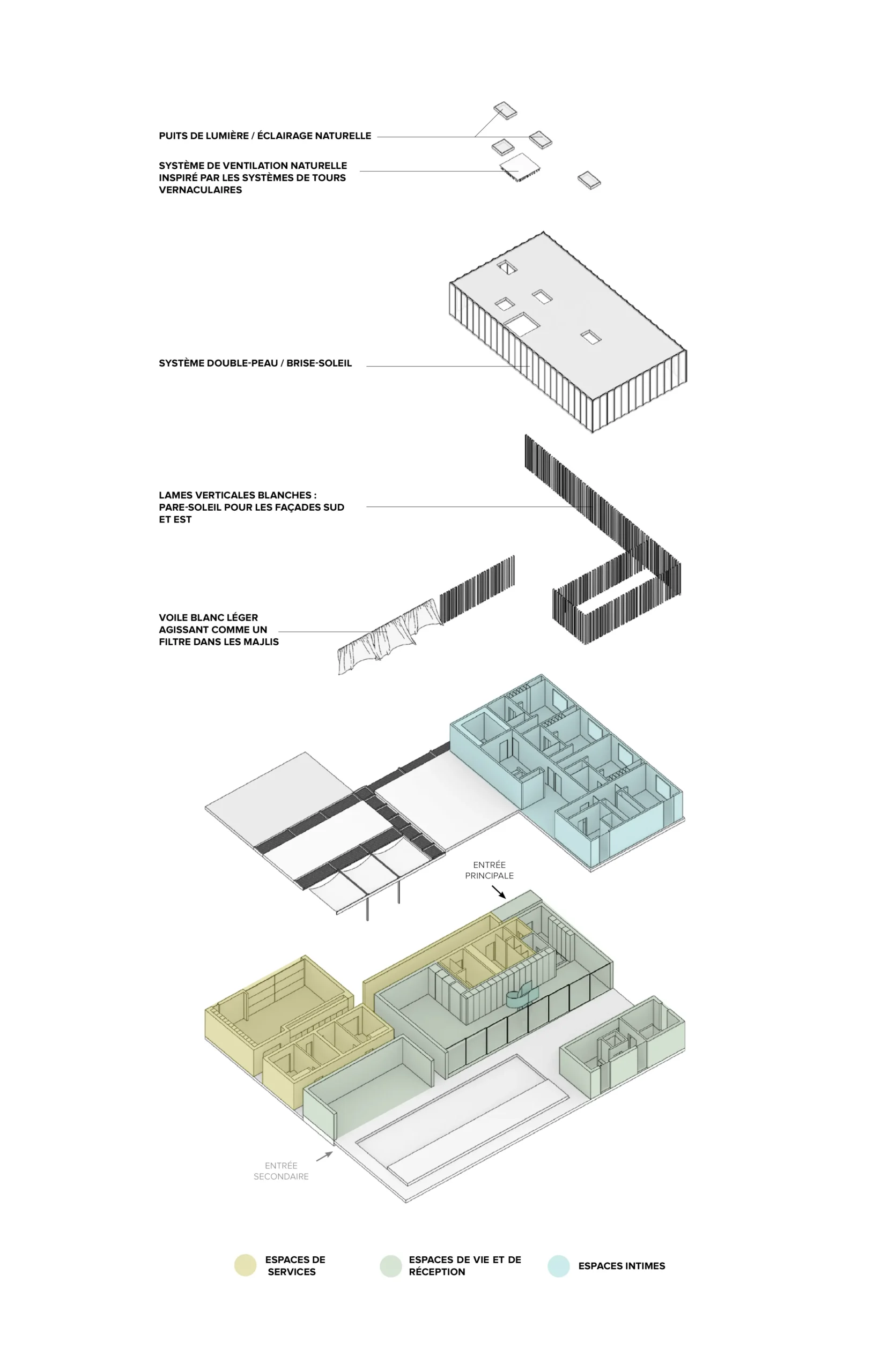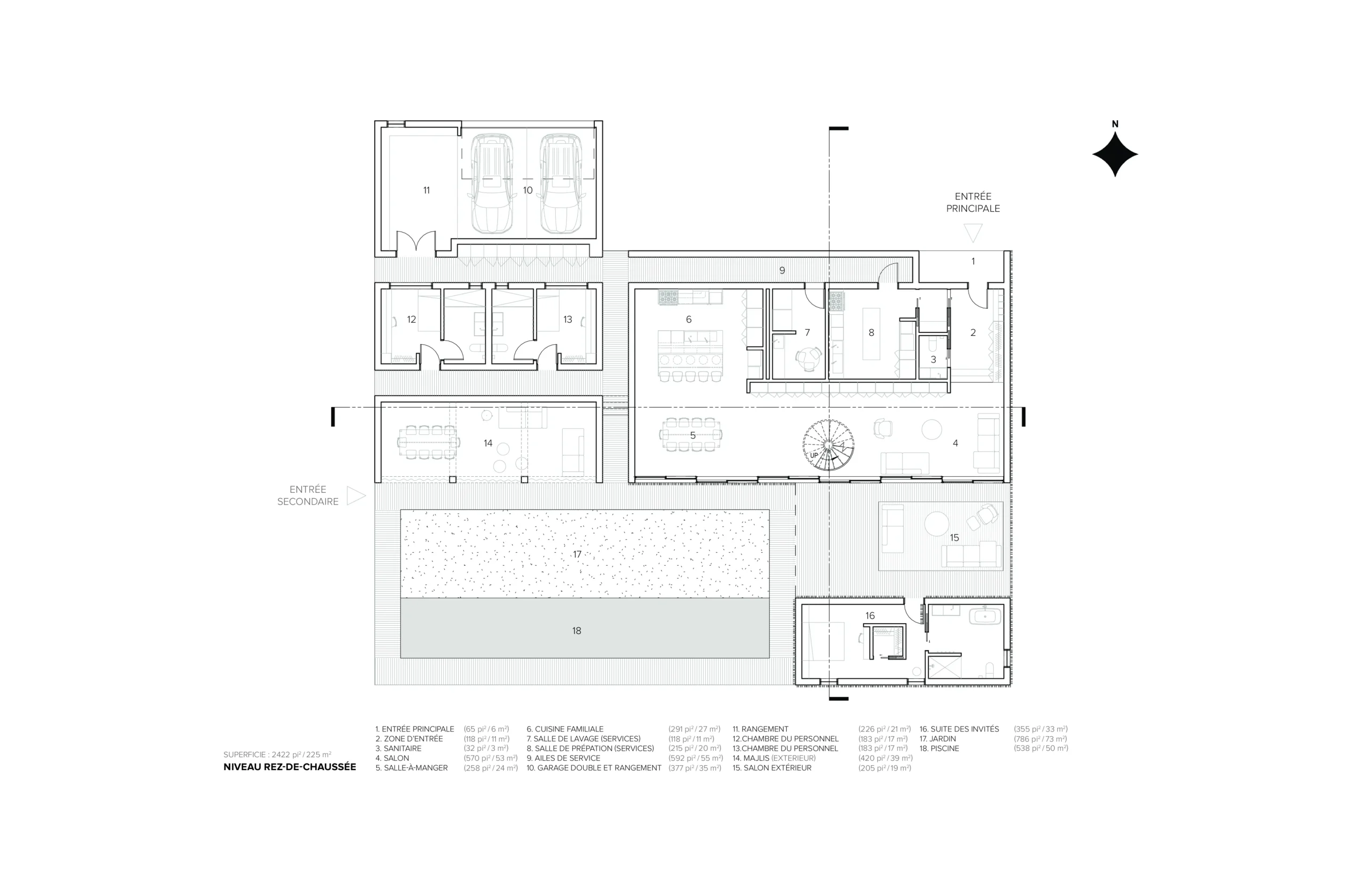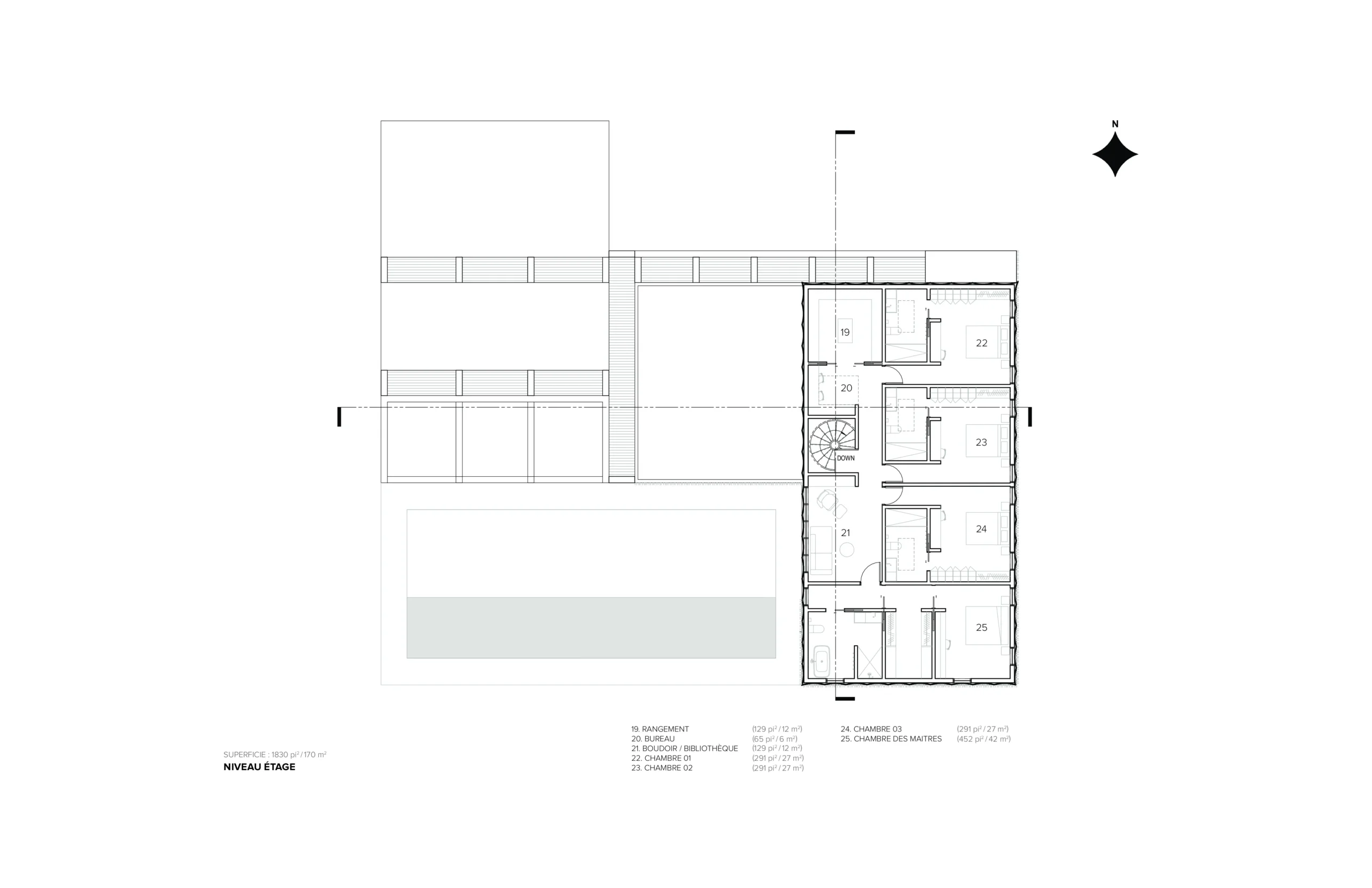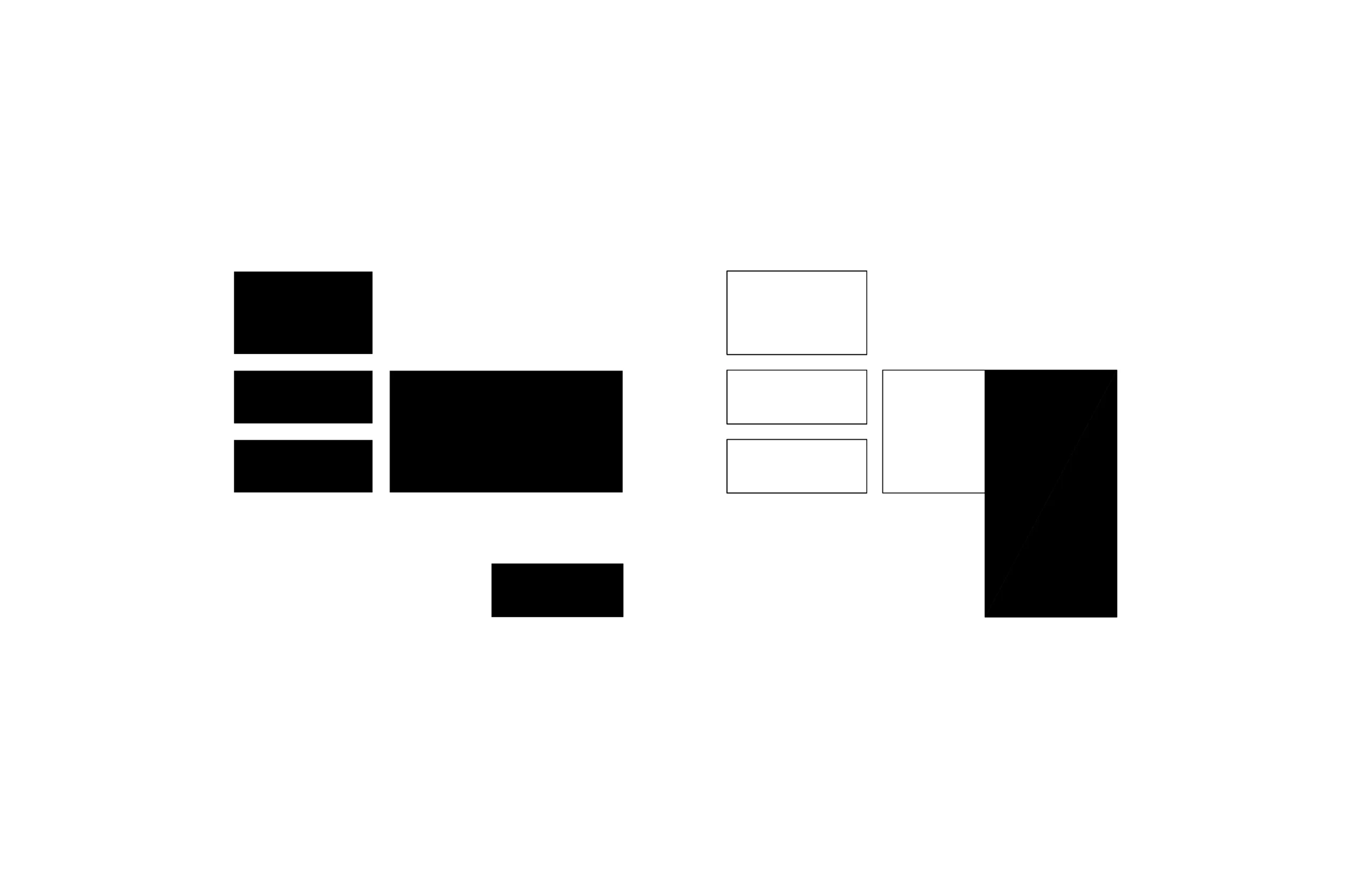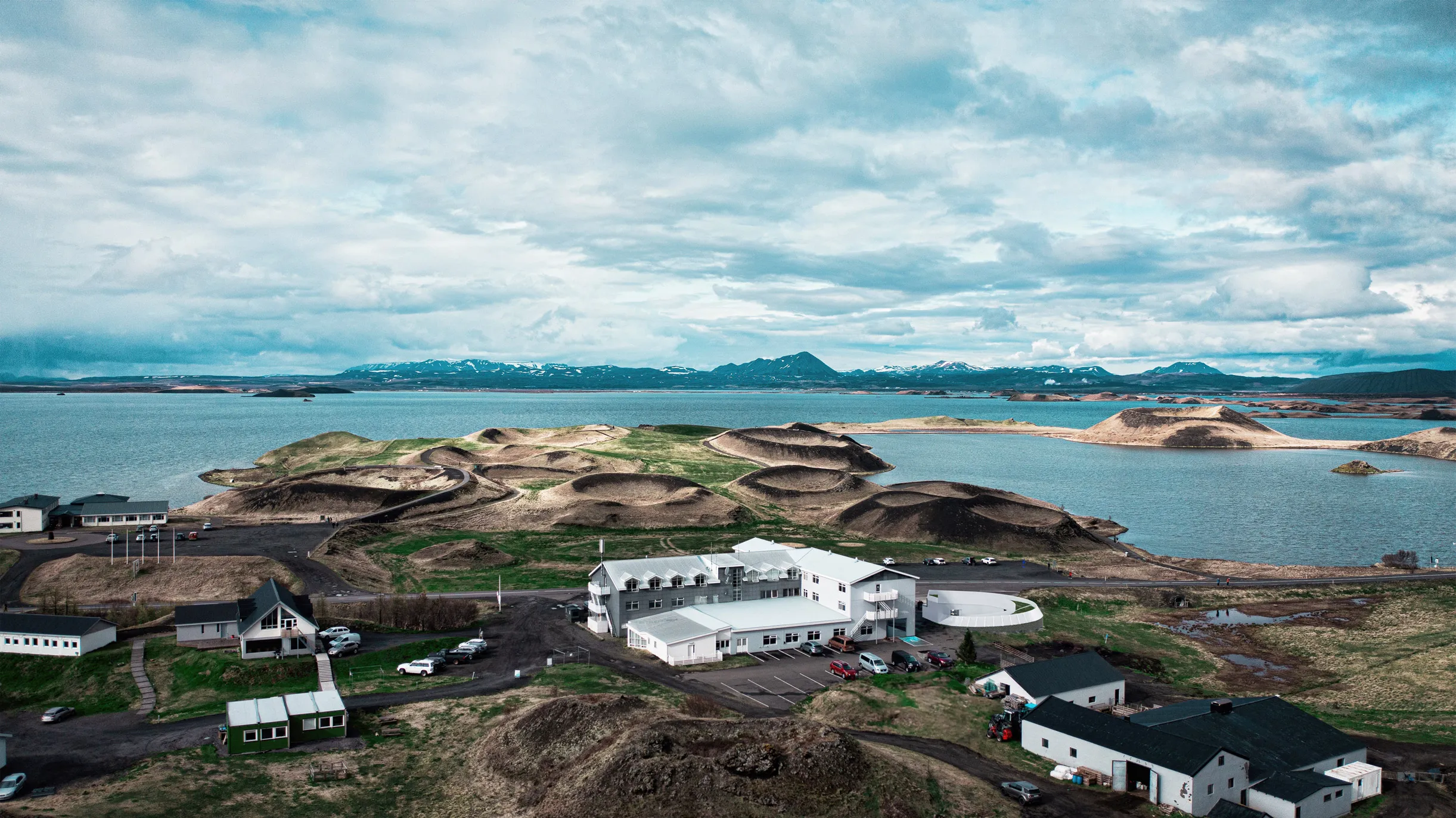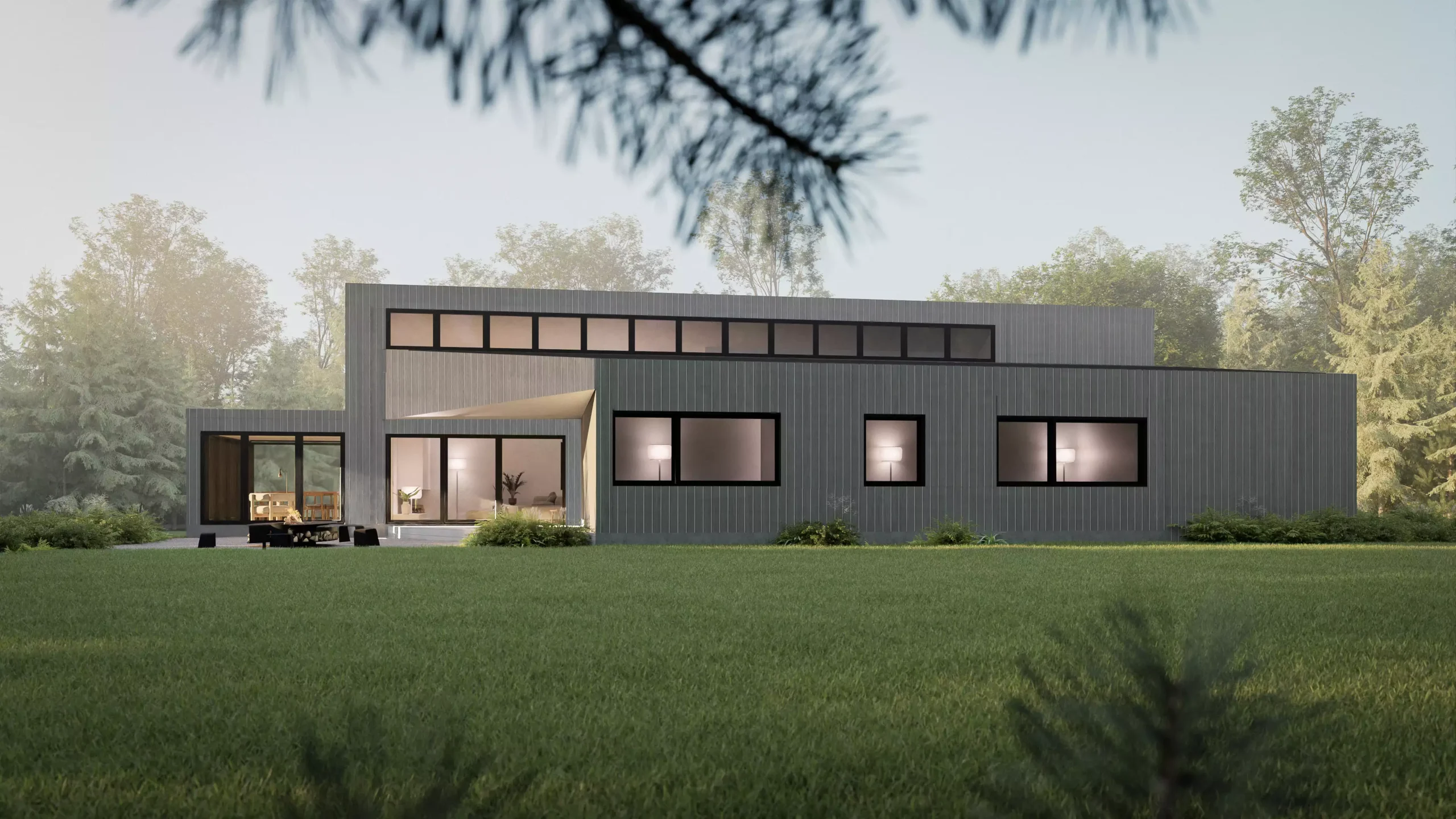THE RESIDENCE OF MEMORIES
Residence of memories
- LOCATION : DUBAI, UAE
- MISSION : COMPETITION – CONSTRUCTION
- CALENDAR : 2023 – 2024
- Area : 4844 ft 2 / 450 m 2
Residential
Status
Competition
Habitat profiling
Going beyond the essential link to function, this architecture is in tune with its (mesological) environment. It is part of space and time according to a sustainable ecological, technical and symbolic approach, relying in particular on bioclimatism, the sensitive and environmental qualities of natural materials, local techniques and know-how and on uses. of the men who live there. The project, designed with a view to saving materials and energy, thus produced, preserves the singularity and diversity of the physical territories and cultural expressions in which it takes shape.
Spatial hierarchy
The architectural plan that we propose for the dwelling aims to distribute meeting and socializing spaces on all levels in such a way as to inhabit and animate all the layers of the building. On each floor, both in the volume of the ground floor and in its upper volume, a new interface with degrees of privacy is proposed. We have implemented a spatial hierarchy between the serving spaces hidden from the spaces served and the social or reception spaces opposed to the more intimate spaces. The experience of the villa therefore becomes a rich journey alternating between projection and introversion.
The architectural journey
It is by researching the route that the plan will take on its vital qualitative dimension. Any plan through the position of doors and passages creates successions of spaces. Instead of being left solely to the requirements of use, this sequence of successive situations will be subject to new interactions: those of perceived emotions. These successive sequences, during the stroll, carry a feeling, a perception and must also participate in a whole. Sequence-to-sequence relationships lead to other sensations. They are to be expected in a sequence in coherence or contrast. Our proposal is thus intended to be a succession of warm, planned and contrasting sequences.
Geometry and material texture of the whole
Two main ideas guided the development of the proposed geometry as well as the general texture of the whole. Firstly, in order to add depth to the project, we wanted to preserve part of the soul of traditional vernacular constructions present in Dubai. To name just one, the heritage house in Dubai bears witness to the memory and built heritage of these places. For example, we propose to reuse a construction technique and a similar natural texture: raw earth (from the site) and to contrast it with simple and precise contemporary details. In order to pursue this idea of symbolic heritage, at the level of the envelope, we wanted to reinterpret the traditional drapes, light and pale colors, common in these warm regions. To do this, we propose to work on light, contemporary and white sunshade systems to control and minimize the climate impact in the home. We have also developed a double skin system upstairs acting as a sensual and delicate filter. Certain reception spaces such as the majlis will be decorated with light veils, thus generating an elegant and sober privacy filter while keeping the spaces in the shade and cool.
Secondly, we opted for a simple geometry composed of volumes superimposed in layers. The project is broken down into 3 distinct zones. In the first area, on the ground floor, we find the service areas, as well as the double garage/storage and the driver's and housekeeper's rooms. Then, in the second zone, still on the ground floor, we identify the main volume of the living and sharing spaces (living room, dining room, kitchen), and two spaces separated from the volume of the ground floor. roadway which are the majlis and an independent suite. Finally the last area is that of the bedrooms, offices and boudoir, more intimate, upstairs. In general, this strategy makes it possible to minimize the monumentality of the whole and to favor the relationship with the site and its landscape which constitutes the cornerstone of the project while hierarchizing the spaces.
The two entrances
This cruciform plan in which the hierarchy of spaces is established, offers great permeability, firstly through the shaded service corridors which surround it, but also through the possibility it offers residents to be able to receive guests through a second entrance, detached from the daily living environment and which enhances the architecture of the villa and its relationship to the landscape.
User comfort
Particular attention was paid to user comfort. Through abundant windows and judicious planning of spaces, the project's natural light supply is greatly enhanced and will promote activities and interactions for everyone. The multiple views to the exterior, as well as those crossing between floors, will also improve orientation and the user experience.
Vegetation and heat islands
Greenery will have an important place in the overall composition of the project. Landscaping will allow users to be close to nature in the city, in addition to being an effective measure to combat heat islands, it will also be an asset for the indoor/outdoor atmosphere, for air quality and user comfort.
A home with multiple identities
Our ambition is to develop living, efficient, dynamic and sustainable projects, capable of generating, for those who experience them, poetic and emotional effects. Our proposal tends to concretize a device architecture, that is to say an architecture which does not only take into account its own physical presence but the sensual actions and events that it can generate. We understand that for the majority of Emiratis maintaining privacy is an important criterion, it is for this precise purpose that we developed the concept, reinterpreting the classic u-shaped plan.
The proposal is intended to be contrasting and with a strong architectural emphasis. In contrast to the treatment of the facades in the private part of the site (south), the entrance is intended to be warm, contemporary and welcoming. Raw earth, through its construction in superimposed strata and its color variations, generates a massive and lasting language. An elegant, natural and warm aesthetic, while guaranteeing the privacy and protection of residents. The service spaces and the majlis area are also built with this same material. On the other hand, the volume of the upper floor is draped in an elegant white veil acting as a filter for users and contrasting the massive effect of the rammed earth with a more airy and light language. Orientation also plays a key role in our concept. In fact, the south facades are equipped with white, contemporary and precise vertical slats which fulfill their roles as sunshades with elegance.
Energy efficiency
Finally, the construction materials for the project will be judiciously chosen as much for their aesthetic and material qualities as for their durability and ease of maintenance. Materials with a high recycled content and/or regional origin will help reduce the consumption of resources and energy and, at the same time, the ecological footprint of the building. In addition to integrating sustainable construction systems, the project incorporates several strategies related to sustainable development. Ultimately we would like to reduce the ecological footprint of the building; these strategies will have a positive impact on user comfort and the building's operating costs in the medium and long term. In order to achieve energy saving targets we are considering multiple measures which will be implemented throughout the process, from design to construction. The performance of the glass envelope will be achieved by high performance glasses. Certain portions of the facades will be made of misty-looking glass which, using screen printing, will considerably reduce solar thermal gains as well as glare. The clear glass walls have been positioned so as to be protected by the imposing courtyard which will act as a sunshade and reduce solar gains. The orientation of the main facade is also taken advantage of in the project to achieve these bioclimatic qualities. Inside, strategies related to air stratification will take advantage of the double height of the architectural staircase and natural ventilation could be incorporated into the project's roof to further reduce the ecological footprint. Other energy efficiency measures will be applied, such as LED lighting, motion detectors, heat/fresh recovery and displacement ventilation.
